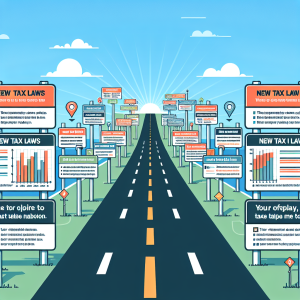
In recent times, remote work has received a significant boost, largely due to the COVID-19 pandemic and the adaptations society has had to make. This shift in work mode is causing ripples in various sectors of the economy; one of the most affected is the housing sector. Now, rural and suburban areas are becoming increasingly attractive to homebuyers. A question arises: how is this shift influencing market trends, pricing strategies, and future forecasts for the housing sector? Our latest blog post endeavors to dig into this fascinating topic.
In recent times, remote work has received a significant boost, largely due to the COVID-19 pandemic and the adaptations society has had to make. This shift in work mode is causing ripples in various sectors of the economy; one of the most affected is the housing sector. Now, rural and suburban areas are becoming increasingly attractive to homebuyers. A question arises: how is this shift influencing market trends, pricing strategies, and future forecasts for the housing sector? Our latest blog post endeavors to dig into this fascinating topic.
The rise in remote work means that employees are no longer bound by geographical proximity to their workplaces. As a result, many are opting for homes in rural and suburban areas where cost of living is generally lower, and quality of life can be significantly higher. This new demand pattern is having an impact on housing market trends. For instance, in the US, prices in suburban areas have risen faster than in urban areas for the first time in many years. This shift equates to altercations in pricing strategies. As demand increases in these previously less popular areas, housing providers and real estate developers have an incentive to review their pricing models upwards. Another interesting facet is the changing landscape of amenities. New home buyers in these areas are often looking for homes that can accommodate home offices and learning spaces, making properties with these features hotter commodities. Additionally, these shifts influence future forecasts in the housing sector. Experts predict continued growth and development in rural and suburban areas, as companies continue to support and even encourage remote working models. Let us delve deeper. Firstly, the rise in cost of rural and suburban property is a classic case of demand and supply. As more people gravitate towards these areas, the demand outstrips the supply, causing an upward spike in prices. However, this also brings a previously unseen opportunity for rural and suburban communities to thrive economically. Secondly, the changing requirements of home buyers means that property developers and housing providers must adjust their offerings to stay relevant. Spaces for home offices, sound-proof rooms for virtual meetings, and robust data connectivity infrastructure are now mainstream home requirements. This subtopic deserves its own dedicated discussion, and in our future blog post, we will explore the effects of remote working on home architecture and design. Lastly, the future of the housing market in light of these current trends. With the remote work trend predicted as a lasting one, we foresee a sustained property demand in rural and suburban housing markets. However, this depends on how quickly and efficiently these areas can develop in terms of needed infrastructure, including healthcare, education, and digital connectivity.
Interviews, tips, guides, industry best practices, and news.









